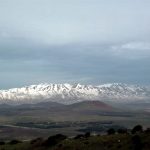Wikipedia suggests: Rabbinic Judaism describes seven names which are so holy that, once written, should not be erased: The Tetragrammaton (whether written YHWH orAdonai), El(“God”), Eloah (“God”), Elohim (“Gods”), Shaddai (“God Almighty”), Ehyeh, and Tzevaot (“[of] Hosts”). Other names are considered mere epithets or titles reflecting different aspects of God, but chumrah sometimes dictates special care such as the writing of “G-d” instead of “God” in English or saying Ṭēt-Vav (טו, lit. “9-6”) instead of Yōd-Hē (יה, lit. “10-5” but also “Jah”) for the number fifteen in Hebrew.
Additionally: The name of God used most often in the Hebrew Bible is the Tetragrammaton (YHWH Hebrew: יהוה). Jews traditionally do not pronounce it, and instead refer to God as HaShem, said to mean literally “the Name”. In prayer the Tetragrammaton is substituted for the pronunciation Adonai, meaning “My Master”.
According to Applied Biliteral Etymology, YWHW, Adonai and Eloah (a form of IL or Allah) are three different Gods. Shaddai means no more than “pull, strong,” used in Ancient Arabic folklore as a name for ‛Ntar Bin Shadad, a black knight and famous pre-Islamic poet. The origin of the name was applied by people who lived high up in the mountains. A mark of strength was the ability to ascend to the caves as quickly as possible.
HaShem “the name” is constructed of two parts. The first is “ha”, is a demonstrative pronoun used for Hadad and Hammurabi and the Arabic dialectal ha and hada “he, the one, this person, this one person.” The feminine form is hyyeh, hadi.
The speakers of Hebrew, a non-lineage tongue of certain Arabic dialects including a type of Yemeni, confuse two different biliteral roots. The first is *SM or *ŠM “Sum, Sumite, Aksomite, Sum(erian) and Šum(erian). The second is *Š’, a secondary biliteral root of *’Š the domain of which includes “trees, foliage, roots, leaves, sticks,” and used figuratively to mean “groups of things, beehive.”
Because early writings resembled twigs, roots of trees and foliage depictions, the word ishem/ism “name, proper name,” was derived from *’Š. The reversed secondary, *Š’ was later used by Akkadian and ancient Arabic speakers to mean “surname, family name.” This may be the origin of tattoos. To cover their naked bodies, women draw images of foliage and shapes on their bodies, a practice that remains to this day amongst certain Amazon tribes.
The following Akkadian entries should clear the misunderstanding:
1- From the Stone Age primary biliteral root *’Š
- ašnan, asnan: [Country → Agriculture] grain, cereal (generic term); divine name
- aššurû: [Humanities → Geography → Countries] 1) Assyrian; 2): ship from Assyria (Aššur) 3) Aššuru (personal name)
- ēpiš ibšu: [Professions] mat weaver (as a family name)
- āš: (in personal names, for example: [Šuāštakal]=trust on him): on him / on her?
2- From the Stone Age secondary biliteral root *Š’
- šuāšu : :1) to him (dative 3rd person masculine singular); 2): him (accusative 3rd person masculine singular); 3): that , this same …. ;
Arabic for tattoo is washm in which the hamza (a very short ‘a’) is replaced by ‘w’. The same word with hamza is ism “name,’ in which ‘s’ replaces ‘sh (š)’.
English sure appears from šur “group, beehive,” reflected in the English saying, “strength in numbers.” The suggestion it derives from secure may not be the case as it derives from Ancient Arabic siker “a door bolt, close, a barrier,” etc.
Akkadian: sikru: 1) seclusion; 2) a dam;
Last modified: June 1, 2023



